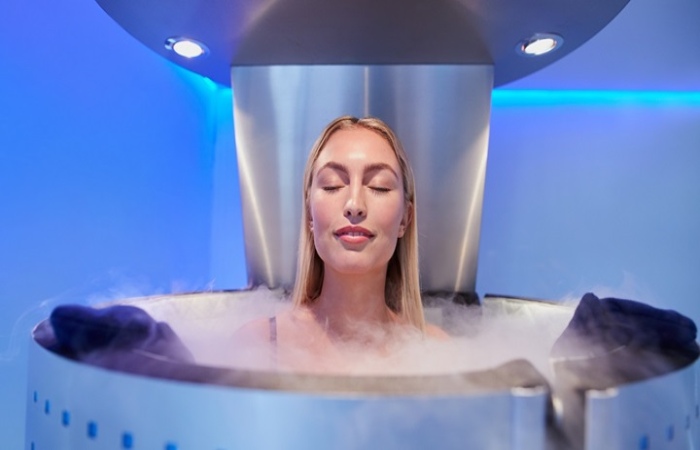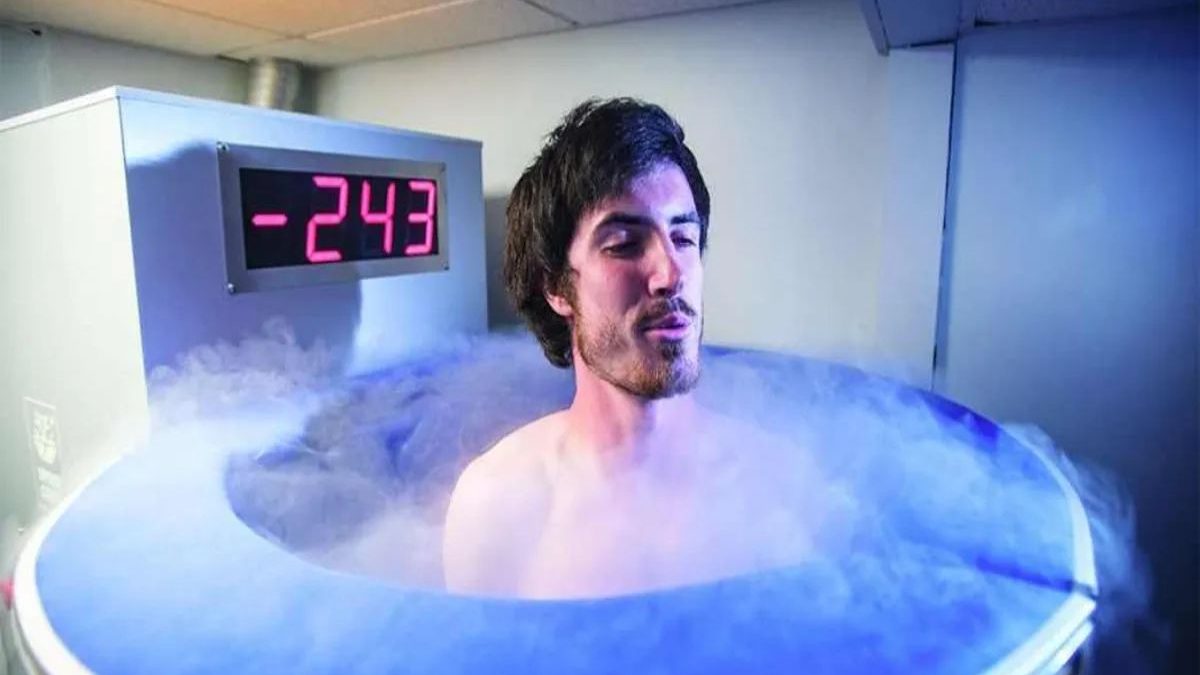In the relentless pursuit of fitness excellence, athletes and fitness enthusiasts constantly seek strategies to enhance recovery and performance. Among the myriad of options, Cryotherapy has emerged as a cutting-edge recovery technique, earning a place in the hearts of the fitness world. This article explores the frosty realm of Cryotherapy and its benefits for post-workout recovery.
Table of Contents
Understanding Cryotherapy
Cryotherapy is a therapeutic technique that involves exposing the body to extremely cold temperatures for a short period. This technique can be applied in various forms, including whole-body cryotherapy (WBC), localized cryotherapy, and cryofacials. To truly appreciate its benefits, especially in the realm of post-workout recovery, it’s essential to delve into the specifics of how it works and its different applications.
The Mechanics of Cryotherapy
- Exposure to Extreme Cold: Cryotherapy typically involves temperatures between -100°C and -140°C. In a whole-body cryotherapy session, individuals enter a cryo chamber or booth for a short duration, usually between two to four minutes.
- Triggering the Body’s Natural Response: The extreme cold causes the body’s surface temperature to drop rapidly. This triggers the body’s survival mechanisms, leading to a series of physiological responses like vasoconstriction followed by vasodilation.
Different Forms of Cryotherapy
- Whole-Body Cryotherapy (WBC): In WBC, the entire body is exposed to cold temperatures. This method is popular among athletes for systemic recovery and wellness benefits.
- Localized Cryotherapy: Targeted to specific areas of the body, such as a sore joint or muscle group, localized cryotherapy is used for focused recovery and pain relief.
- Cryofacials: A more aesthetic approach, cryo facials involve applying cold to the face, which is said to reduce inflammation, improve skin tone, and provide a rejuvenating effect.
The Science Behind Cryotherapy and Muscle Recovery

Cryotherapy works by exposing the body to ultra-low temperatures, ranging from -100°C to -140°C, for a short duration. This exposure triggers the body’s natural fight-or-flight response, leading to several physiological reactions:
- Reduced Inflammation: The cold reduces blood flow to the area, decreasing inflammation and swelling, which are common after intense workouts.
- Pain Relief: The numbing effect of the cold can provide immediate relief from muscle soreness and joint pain, commonly known as Delayed Onset Muscle Soreness (DOMS).
- Faster Recovery Time: By reducing inflammation and pain, Cryotherapy helps athletes recover faster, enabling them to maintain a more rigorous training schedule.
Enhancing Performance with Cryotherapy
Cryotherapy, beyond being a tool for recovery, has been found to significantly enhance athletic performance. This performance boost is achieved through several key mechanisms:
Improved Endurance
- Reduced Muscle Soreness: Regular use of Cryotherapy helps in reducing muscle soreness after intense workouts. This reduction in soreness means athletes can train harder and longer, leading to improved endurance over time.
- Faster Recovery Between Training Sessions: By speeding up the recovery process, athletes can engage in frequent, high-intensity workouts without the typical downtime, enhancing their endurance and stamina.
Increased SEtrength and Muscle Gain
- Optimized Muscle Repair: The cold exposure helps in reducing inflammation, which is crucial for muscle repair. Efficient muscle repair is a key factor in increasing muscle strength and size, particularly important for athletes in strength and power sports.
- Enhanced Training Intensity: With reduced pain and inflammation, athletes can maintain a higher intensity in their training sessions, contributing to greater gains in muscle strength and size.
Psychological Benefits
- Mental Resilience: Regularly undergoing the intense experience of Cryotherapy can build mental toughness, an invaluable trait for athletes in competition.
- Improved Focus and Clarity: The stimulating effect of the cold can lead to increased mental clarity and focus, aiding athletes in their training and competition performances.
Boosted Circulation and Oxygenation
- Enhanced Blood Flow: Post Cryotherapy, the body works to reheat, improving blood circulation. This increased circulation can lead to better oxygenation of muscles, crucial for athletic performance.
- Detoxification and Nutrient Delivery: Improved blood flow also aids in the removal of toxins from muscle tissue and the efficient delivery of nutrients, both essential for optimal muscle function.
Reduced Risk of Injury
- Decreased Inflammation and Swelling: Regular Cryotherapy sessions can help in managing chronic inflammation, reducing the long-term risk of injuries related to overuse and inflammation.
- Improved Joint Function: The reduction in inflammation can also lead to improved joint mobility, further decreasing the risk of injuries.
Integrating Cryotherapy into Your Routine
For those looking to integrate Cryotherapy into their recovery routine, consider the following steps:
- Consult a Professional: Talk to a healthcare provider or a trained Cryotherapy specialist to understand if it’s right for you.
- Start Gradually: Begin with shorter sessions and gradually increase exposure as your body adapts.
- Combine with Other Recovery Methods: Cryotherapy is most effective when used in conjunction with other recovery techniques like proper nutrition, hydration, and rest.
Conclusion
Cryotherapy represents a fusion of ancient wisdom and modern technology, offering a powerful tool for enhancing post-workout recovery and overall athletic performance. As with any therapy, it should be approached with care and professional guidance. For those in the beauty and wellness industry, understanding and possibly integrating Cryotherapy into their services could be a significant step forward. In this context, Salon Software offers comprehensive management solutions that can streamline operations, potentially including innovative therapies like Cryotherapy.

